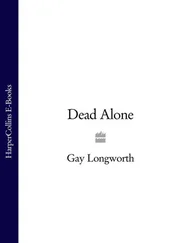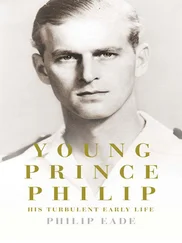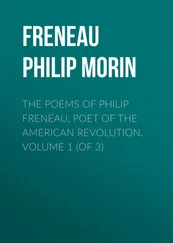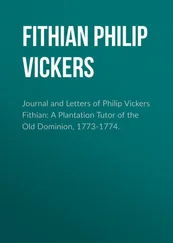Peter undoubtedly imposed a harsher regime on Ukraine in the wake of Mazepa’s betrayal. Nevertheless, the tale told by nationalists misrepresents the truth. 21Peter had been given reason to distrust the Ukrainian elite. Associates of Mazepa and those suspected of association with him were therefore examined and tortured, and, if local legend can be believed, nearly a thousand of them were executed. On the other hand the new hetman and other loyalists were rewarded. The Zaporozhian Sech was destroyed (though it was subsequently to be revived). Some Russians and others benefited from a great share-out of land in Ukraine, but the chief beneficiaries were members of the indigenous Ukrainian elite. Ukrainian regiments were marched to Ladoga and other points to labour on Peter’s projects. However, these consequences were not part of any long-standing plan for domination. Rather they were a response to what had happened, the outcome not of Russia’s nefarious intentions but of betrayal by Mazepa and by Ataman Hordienko of the Zaporozhian Sech. And the rebels and their supporters were motivated not by nationalism, which belonged to a later age, but by a desire to be on the winning side and the hope of accreting more property and personal privileges.
However, although the original contract of 1654 between the Tsar and Ukraine had been broken by subsequent rebellions, the Russian government was not eager to create trouble for itself by alienating subjects who might be loyal, or at least politically inert. The subsequent shifts in policy stemmed largely from changing circumstances and pragmatic attention to Russian interests.
The situation in the Baltic territories of Livland and Estland (corresponding with part of today’s Latvia and Estonia) was quite different. After conquest in 1710, the existing rights and privileges of their landholding nobility and inhabitants were immediately confirmed, though their nobility were, as it were, effectively obliged to serve on the same terms as their Russian counterparts. As it was expressed in pompous, careful legal language, all former ‘privileges… statutes, rights of nobility, immunities, entitlements, freedoms… and lawfully held estates are hereby confirmed and endorsed by Us and by our rightful successors’. The Lutheran Evangelical religion was permitted without any let or hindrance, 22and German was allowed as the language of the courts and administration.
True, the conditions were only for ‘the present government and times’, which left the way open for Peter’s successors to withdraw them at some future date. But these two new provinces were accorded, and continued to receive, extraordinarily privileged treatment. In 1725 a separate College of Justice and a financial office were set up for them, staffed by Germans and allowed to deal with other parts of the central administration in German. Concessions by the imperial authorities were commonly prompted by fear of rebellion or administrative convenience, but in this case they were informed by a wish to reform Russian institutions along more efficient Germanic lines. Peter had been deeply impressed with the ideas of the early Enlightenment, including the concept of ‘the well-ordered police state’ that was being introduced into some of the states of central Europe, and the more educated, German-speaking population of his new possessions were in touch with that world of Mitteleuropa. Furthermore, he had a high regard for their legal system and institutions of local government, which derived from both German and Swedish practice and which he thought might serve as models for Russia.
It was recognized, too, that in taking over these territories the Empire had acquired an important human asset which was badly needed — a large number of highly educated men skilled in many useful professions, from navigation to pharmacy, and from economics to engineering, administration and the law. The Baltic German elite and Russia found a commonality of interest, and from that point on these Germans were to play a prominent part in both Russia’s cultural life and the running of the Empire. 23
Yet, despite the extent and strategic value of Peter’s gains, on the Baltic, the Caspian and the Pacific, the Empire remained overwhelmingly Russian in character. It has been calculated that in 1719 over 70 per cent of its population were ethnic Russians, and at least another 15 per cent were Ukrainians or Belarussians, whose languages were very similar, though there were significant differences related to culture, primarily religion. Of the remaining minorities, the largest groups were Estonians and Tatars (1.9 per cent each), Chuvash (1.4 per cent), Kalmyks (1.3 per cent), Bashkirs (1.1 per cent), and Finns and Latvians (1 per cent each). 24
Great resources had been expended on the Empire’s expansion, though by modern standards they were modest. Peter left an army little more than 200,000 strong, yet that represented an almost three-fold increase. He also left Russia’s first fleet of significance: 48 ships of the line, as well as 800 smaller vessels. 25In the northern war alone Russia lost 100,000 men killed, died of wounds and of disease, and a total of over 365,000 were drafted into the armed services during Peter’s reign — but this was little more than 15,000 a year out of a male population of nearly 7.8 million. 26The costs were proportionate. However, between 1710 and 1725 the state’s revenues increased threefold — or by some 250 per cent allowing for inflation. 27This proved sufficient to feed, clothe, arm and equip the army and navy, and to build the core of St Petersburg, together with all its related infrastructure, and dozens of forts and settlements besides. Funds were to prove insufficient to prevent most of the navy going to rot after Peter’s death. On the other hand his military priorities produced some useful by-products: expanded woollen cloth and arms industries, and an expansion in iron production sufficient not only to meet the demands of the armed services, but to roof half the buildings of the new capital, and to export sufficient quantities in pig form to help get the heavy-industry sector of Britain’s Industrial Revolution under way
Despite the immense cost in terms of money, people and material, Peter’s projects turned out to be affordable. In the later seventeenth and early eighteenth centuries Russia’s assets had grown significantly, thanks to conquest and to more peaceful conditions in the productive Black Earth zone of the south. Furthermore, along with other parts of Europe, the Empire profited from a marked economic upswing that stemmed from a beneficent global warming. As harvests became more abundant, diet improved and so did fecundity. Epidemics were somewhat fewer, and their death toll less severe. With population increasing, the economic tempo quickened — and the demands of government accentuated the trend. In this context Peter’s huge expenditure on war and on building projects (shipyards, mines and factories as well as a new capital city) was in the end to yield dividends — notwithstanding the claims by some economic historians that the country’s economic development would have been even better without it. 28
And there was a moral dimension besides. More than a century later Russia’s greatest poet, Aleksandr Pushkin, who well understood the suffering involved in the creation of St Petersburg, wrote a poem, The Bronze Horseman, which celebrates the city and its creator. Pushkin demonstrated nothing less than love for the imperialism and militarism the city represented:
I love you, O military capital,
Love your acrid smoke and the thunder of the guns
That announce the birth of a son in the imperial palace
Or a victory over the enemy.
Russia triumphs again…
To this day many Russians share Pushkin’s sentiments, even though they know about the costs. And the moral dividend was also to help sustain the imperial momentum, and even quicken it.
Читать дальше





![Stephan Orth - Behind Putin's Curtain - Friendships and Misadventures Inside Russia [aka Couchsurfing in Russia]](/books/415210/stephan-orth-behind-putin-s-curtain-friendships-a-thumb.webp)





